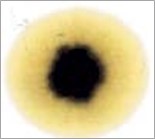
OilChat numbers 69 & 70 addressed the dangers of and possible reasons for engine oil level rising on the dipstick. But your dipstick can tell you much more than the level of the oil in the engine. Dipstick oil analysis may sound a bit farfetched, but in fact it can reveal a great deal about the condition of the oil, and even the engine itself.
During its working life inside the engine, motor oil gets contaminated with water, fuel, soot and other contaminants. The oil is also subjected to chemical changes, such as additive depletion and oxidation. Dipstick engine oil analysis is quick, easy and cheap. Simply pull the dipstick out and check the oil as follows:
Water: Bubbles on the dipstick, a brownish residue just above the oil level or milky-brown oil with a thick consistency (high viscosity) are all indications of water in the oil. To confirm the presence of water do a crackle test by putting a drop of oil from the dipstick on a hot surface (temperature 100⁰C or more). The oil will bubble, crackle and pop when moisture is present. Check for white, sweet-smelling smoke coming from the tailpipe. This is a sign of coolant (water and glycol) in the oil.
Fuel: Oil on a dipstick that smells like petrol or diesel is the first sign of fuel dilution. Fuel dilution can reduce the viscosity of motor oil substantially. Another indication of fuel in the oil is when the oil bubbles and boils without a crackle when doing the crackle test.
Soot: Thick darkened oil on the dipstick as shown above, is a sure sign of excessive soot in the oil – diesel engine oil in particular. A carbonaceous odour is another indication of high soot levels in the oil.
Oxidation: When oil oxidises, its colour tends to darken. Badly oxidised oil usually has a foul, pungent and burnt odour. Oxidised and contaminated oil will lose interfacial tension. A simple test for interfacial tension is to place a drop of oil from the dipstick on the surface of water. If the oil drop spreads out over the surface of the water (instead of clustering up like new oil) it may be time for an oil change.
Additive Depletion: If you are still not sure whether you should change the oil, you can do a blotter spot test to check the additive reserve/concentration of the oil. To do the blotter test, place a small drop of oil on a piece of blotting (chromatography) paper. The paper should be elevated to avoid contact with the flat surface below. Allow at least one hour for the oil drop to spread out on the paper.
As the oil spreads out, it should carry with it the dark contaminants. Ideall y the contaminant band should spread with the oil to leave a fairly even discoloration. When the oil is badly contaminated, the contaminants clump together and do not migrate with the oil front. This indicates that the dispersancy additive of the oil is depleted.
y the contaminant band should spread with the oil to leave a fairly even discoloration. When the oil is badly contaminated, the contaminants clump together and do not migrate with the oil front. This indicates that the dispersancy additive of the oil is depleted.
It is as simple as that. We trust you will now be competent to do your own dipstick oil analysis and that checking oil levels will never be the same again. If you have any further questions regarding oil analyses phone 011 462 1829, email us at info@bcl.co.za or visit www.q8oils.co.za. Our lubricant experts are at your disposal and ready to provide you with advice and answer any questions you may have.
